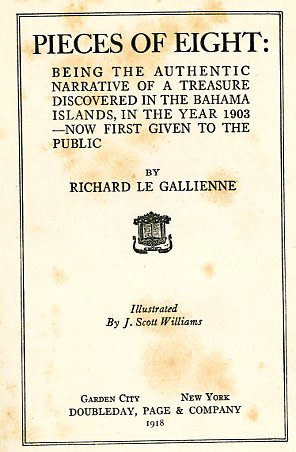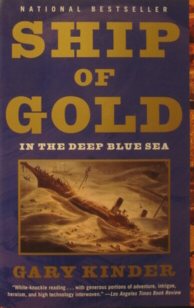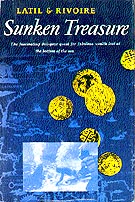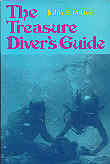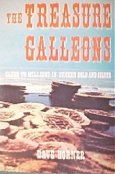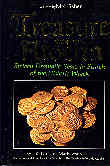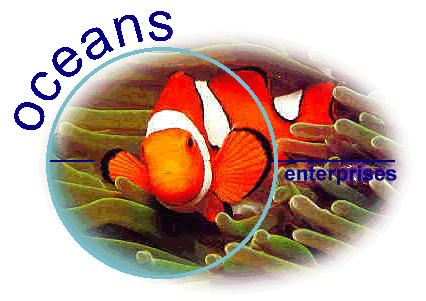| CLASSIC DIVE BOOKS
Treasure wrecks and maritime sites. |
HOMEPAGE | |
| Please note: The books are listed for interest only,
and not offered for sale.
See also:
For a superb BIBLIOGRAPHY OF SUNKEN TREASURE BOOK, contact the author David Crooks at dcrooks@treasurelibrary.com |
See also authors:
Robert Stenuit, Robert Burgess, Robert Marx Kendall McDonald |
| . | ATLAS OF TREASURE MAPS.
Publisher Thomas Nelson & Sons, New York, NY, 1957. F.L. Coffman. Color maps showing over 3,000 locations of sunken and buried treasures and ships in the Western Hemisphere and British Isles. Cloth hardback cover. Copyrighted in 1952, 1957. Library of Congress Catalog Card No.: Map 57-3. Author gives two pages of facts and helpful hints on treasure-hunting. He has investigated over 42,000 locations in the Western Hemisphere, and authenticated 3,500, most of which are included in this volume, with latitude and longitude, the name of the ship, when it sank, and other pertinent information. |
|||
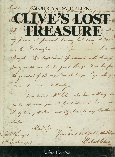 |
CLIVE'S LOST TREASURE
Geoffrey and David Allen. First published by Robin Garton Ltd, London in 1978. Hardcover, 103 pages. From the blurb: Faced with the challenge of driving the French from India, Robert Clive booked a passage in the East Indiaman Dodington for his voyage out in 1775. At the last moment he switched ships but left in Dodington the major part of his wealth - three thousand pounds in gold coin. Also on board the ship was a company of 200 soldiers, and her valuable cargo included 36,000 ounces of silver in pieces of eight. In her hold were cannon, for the defence of India, sent on the orders of George III. The ship struck Bird Island ofdf Port Elizabeth. Only 23 men survived and they remained their for eight months while a sloop was built from the wreckage. In great physical hardship, troubled by both mutiny and piracy, the survivors sailed some 800 miles north to Lourenco marques. Over two centuries later a team of divers headed by David Allen found the fabled wreck of the Dodington. Their salvage work was perilous for Clive's gold was jeaslously 'guarded' by Great White Death Sharks. Dodington is the first British East Indiaman to have been salvaged and the find has been hailed as a major archaeologicak triumph. Great White Death Sharks!!! Good grief. |
|||
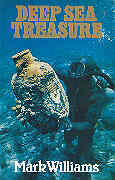 |
DEEP SEA TREASURE
Mark Williams. Published by William Heinemann Ltd, London, 1981. Hardcover, dustjacket, colour and mono prints. 'The author examines the work of team leaders and divers such as Roland Morris, Robert Stenuit, Rex Cowan, and Robert Marx, with an important side look at the original discoveries of the late Kip Wagner off the coast of Florida.' [ps] |
|||
| DEVIL'S GOLD
Ted Falcon-Barker. Published by Nautical Publishing Company, Lymington, Great Britain. Devil’s Gold tells the tale of an Australian mariner hungry for gold and adventure. After hearing a rumour of treasure from a Haitian Voodoo priestess, who had just tried to kill him, the author decides to investigate the area north of the Dominican Republic, known as silver reef. Here the author finds cannon, cannon that the author believes are from Nuestra Senora de la Concepcion, a seventeenth-century Spanish flagship with an extraordinary story. The author promptly returns to London to purchase a ship and prepare an expedition for sunken treasure. An adventure ensues, where the author and his two crew-mates sail to the west-indies where they face pirates, sharks and the ultimate cost of the gold they are searching for. [jp - Thankyou Jett for this contribution.] |
||||
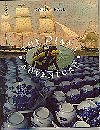 |
THE DIANA ADVENTURE.
Dorian Ball. (Self) published in Groningen, Netherlands. 1995 - thru Malaysian Historical Salvors, Kuala Lumpur, and Kemper Printers and Publishers, Groningen. Over four million dollars worth of porcelain was raised from the British ship Diana which went down off Malacca on the west Malaysian coast in 1817. Author Dorian Ball spent several years locating and raising the treasure which was eventually sold at auction. Like the raising of the famous Nanking cargo (which Ball worked on), the location and salvage of the Diana's cargo makes for fascinating reading. This is one of the finest books I have read on the whole process of a ‘dream come true' -from the dream to reality of finding the wreck, overcoming bureaucracy, raising the treasure and the sale. The book is exceptionally well produced. Hardcover, dust jacket, 176 pages, full colour. [ps] |
|||
| DIG FOR PIRATE TREASURE
Robert L. Nesmith. |
||||
.  |
DIVING FOR PLEASURE AND TREASURE.
Clay
Blair, Jr.
Published by The World Publishing Company, Ohio, USA. Copyright 1960. Hardcover, dust jacket, 346 pages. Diving round the cost of Yucatan near Cozumel Island. in five parts - The Elusive Monitor; Hunting Sharks and Sunken Gold; Torpedoed by Gossip; His Majesty's Ship Woolworth; The Mists of History. Covers the search and salvage of the Spanish galleon El Matanceros. [ps] ** Identical in content to the British publication: DIVING FOR TREASURE. Clay Blair. First published Great Britain in 1961 by Arthur Barker Ltd. [ps] Hardcover, dust jacket, 240 pages, mono plates. Ebay description:
|
|||
| DIVING FOR THE GRIFFIN
Charles Daggett and Christopher Shaffer. |
||||
| DIVING FOR TREASURE
Peter Throckmorton. First published in Great Britain in 1977 by Thames and Hudson Ltd, London. Hardcover, dutjacket, square format, 136 pages, mono and colour prints, line drawings. The author is a well-known for his many articls and books on maritime archaeology. This volume covers 'the birth of Maritime Archaeology', the wrecks, techniques of searching and surveying and a host of other interesting chapters more directed to professional survey work than 'treasure hunting'. [ps] |
||||
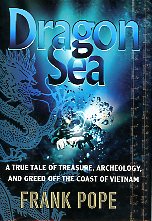
.  |
DRAGON SEA - A True Tale of Treasure, Archaeology,
and Greed off the Coast of Vietnam.
Frank Pope. Harcourt Inc. New York etc. 2007. Hardcover, dustjacket, 342 pages, index, mono drawings. (As shown top left). Paperback Penguin, 2008 - (cover left bottom. I just loved reading this book. It covers so much, and is exceptionally well written - easy to read and one of those 'I can't put it down books'. I was so much inspired that I bought some of the Hoi An treasure. I was going to write a review but why invent the wheel! C. H. Blickenstorfer from scubadiverinfo.com has done a fine job of doing just that, and as I share his enthusiasm, I hope he wont mind me snaffling his excellent review. [pjs] http://www.scubadiverinfo.com/3_book_review_dragon_sea.html
Dragon Sea, however, is an exceedingly serious and very well written book describing the recovery of a large amount of 15th century Vietnamese porcelain and pottery from a wreck off Vietnam in the South China Sea. The dive site is deep, 220 feet, the conditions challenging, the origins of the wreck unknown, and the cargo of great archeological interest. Learning about such an involved recovery effort alone would make for fascinating reading, but "Dragon Sea" presents it all with several twists. First, while the history of Chinese porcelain is very well documented, almost nothing is known about Vietnamese ceramics and art. That's because of Vietnam's turbulent history that wiped out much of its cultural heritage. As a result, learning about techniques, timelines and styles is of great importance to the Vietnamese. Second, there's the allure of searching for treasure and plundering wrecks once they are found versus mounting attempts to preserve such wrecks as cultural heritage. Unfortunately, enforcement of those noble goals is almost impossible, and surveys and preservation are very expensive. So why can't the two sides join forces, with treasure hunters financing officially sanctioned recoveries and performing them in conjunction with legitimate archeologists, splitting the proceeds, with part being sold and part exhibited in museums? This is what Dragon Seas is all about, the tale of such a cooperative effort. The book is organized into three parts, one introducing the characters and challenge, the second the actual recovery, and the third on what happened afterwards. The two principal characters in the book represent the opposing forces in the conflict, forces that join in an uneasy cooperation. On the one side you have Mensun Bound, an acclaimed British marine archeologist at Oxford University with an interesting background (born on the Falkland Islands, educated in the US, and a Fellow of St Peter's College), a record of major underwater archeological achievement, involvement in the Discovery TV series "Lost Ships", and also a mentor to author Frank Pope. On the other side is Malaysian businssman Ong Soo Hin, a mix of "cultured British charm and Chinese entrepreneurial zeal." Ong becomes interested in shipwreck salvage as an investment opportunity, a hunch that seems justified when the salvage of the Dutch East India Company ship Geldermalsen results in the second largest auction Christie's ever had. So when local fishermen start recovering what seems like ancient Vietnamese ceramics with nets and rakes, Ong sees a golden opportunity. He establishes himself as an "ethical salvager" by hiring Bound and setting up a mutually beneficial coalition of usually opposing forces. The second, and largest, part of the book describes the 1999 salvage effort itself, starting with building a team and actually finding the wreck. There are numerous challenges due to the 220-foot depth that makes open-circuit scuba unfeasible. The depth and size of the project requires a whole flotilla of ships as well as a saturation diving setup, the kind that oil companies employ. Here we learn of the competing priorities of time, technology, safety and cost, with Bound, the divers, and Ong all pulling in different directions. There's interesting detail on saturation diving, weather conditions, near fatal storms, and any number of personality conflicts, and an emerging wealth of Vietnamese ceramics and its puzzling history. The final part of the book deals with the aftermath of the recovery in 2000 with, again, diverging goals. Bound, the archeologist, seeks to preserve, document, publish (and fend off competing archeologists). Ong, the businessman, seeks a return on his investment, eventually choosing a small San Francisco-based auction house that had recently been acquired by eBay (the auction took place in October of 2000. The reality is sobering and leaves one wondering if partnerships with such different priorities are possible at all. |
|||
| ENCYCLOPEDIA OF SUNKEN TREASURE
John Wright |
||||
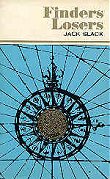
. |
FINDERS LOSERS
Jack Slack. First published by Hutchinson & Co,1968. Edition shown (left) published by The Adventurers Club, London, 1968. Hardcover, dustjacket, 174 pages. [ps] This is what I initially wrote: For the life of me, I can't determine if this is a completely imaginative novel, or a novelette based on fact. I think it is the latter, only because of the cover blurb - "Jack Slack was sceptical about sunken wrecks. And one fine day in August 1964, the miracle happened. On the sea-bed they found the remains of a sixteentyh-century shipand with them a vast hoard of coral-encrusted Spoanish piecs-of-eight. It is annopying when the publishers do not make it clear whether a book is fact or fiction. But it looks like an interesting book, and certainly well written and easy to read. But did it all happen? (I am reminded of Alan Robinson's infamous book Treasur Is Not For the Finder). The author Jack Slack contacted me, 2 October 2002. This is what he wrote: This is the first time I've ever heard the notion that my book might not be a true story, albeit I can, for the first time, see from the blurb how you arrived at that conclusion. It was also published by Holt, Rinehardt & Winston in the U.S. and needless to say, the blurb is entirely different, but now I might read that blurb with an entirely new set of eyes.At the time of publication the treasure find has been front page headlines in the UK, U.S. and much of Europe, and I guess the publishers assumed too much. From Jack's website, we have further information: He is also an intrepid adventurer, traveling around the Atlantic and Caribbean on skin-diving and windsurfing expeditions. He has been a champion skin diver and scuba instructor, shark diver as well as an experienced cruising sailor. After college, he lived and cruised in the Bahamas on his sailboat and during this period he discovered a sunken Spanish treasure galleon, the news of which made headlines throughout the world and a cover story in Look magazine. He is the author of Finders Losers the story of the Lucayan Treasure Find first published in the U.S. by Holt, Rinehart & Winston in 1967, and subsequently published in the United Kingdom by Hutchinson Ltd. The story was later (in the 70's) made into a documentary film released in Europe. During his cruising days he was a friend and diving companion of Jacques Mayol, the famous French skindiver and free dive record holder. Thanks for the info Jack - very much appreciated. |
|||
| FULL FATHOM FIVE - Several books of this title. See separate webpage. | ||||
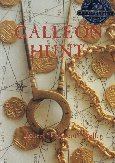 |
GALLEON HUNT
Robert 'Frogfoot' Weller. Published by Best Publications, USA, 1992. Edition shown - paperback, 268 pages. From the blurb: The Weller diving team, ‘Frogfoot' and Margaret, have been salvaging treasure from the 1715 Spanish Plate Fleet since 1978. Bob, an ex,frogman from the Korean War, has been salvaging in the Florida Keys since 1960. Together they have recovered some great treasures, but their greatest treasure is the friends they have made in the treasure diving community. Bob is the author of ‘Sunken Treasure on Florida Reefs', and ‘Famous Shipwrecks of the Florida Keys'.
|
|||
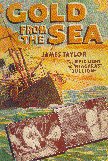
. |
GOLD FROM THE SEA.
James Taylor. 1942. Captain John Williams and his crew on board the old salvage vessel Claymore recovered more than two million pounds Sterling of gold from the Royal Mail Steamer Niagara off the northern end of New Zealand. She had gone down in June 1940. The principal diver in this remarkable recovery was Australian diver Johnno Johnstone. This is the origional story of the salvage of the gold. Hardcover, dustjacket, 270 pages, several mono plates.
|
|||
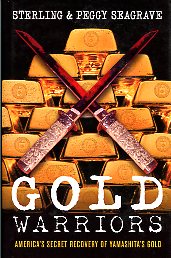 |
GOLD WARRIORS
America's Secret Recovery of Yamashita's Gold. Sterling and Peggy Seagrave Verso, London. 2003 Hardcover, dustjacket, 332 pages, index, annotations. No illustrations. Frpm the fly:In 1945, US intelligence officers in Manila discovered that the Japanese had hidden large quantities of gold bullion and other looted treasure in the Philippines. President Truman decided to recover the gold but to keep the riches secret. These would be combined with treasure recovered inside Japan during the US occupation, and with Nazi loot recovered in Europe, to create a worldwide American political action fund to fight the Cold War. Overseen by General Douglas MacArthur, President Truman, and John Foster Dulles, this "Black Gold" gave Washington virtually limitless, unaccountable funds, providing an asset base to reinforce the treasuries of America's allies, to bribe political and military leaders, to fund covert operations, and to manipulate elections in foreign countries for more than fifty years. Drawing on a vast range of original documents and thousands of hours of interviews, Gold Warriors exposes one of the great state secrets of the twentieth century. ps] |
|||
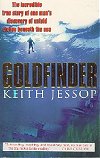 |
GOLDFINDER
The Story of One Man's Discovery of the Ocean's Richest Secrets. Keith Jessop.
|
|||
| IN SEARCH OF SPANISH TREASURE -
A DIVER'S STORY
Sydney Wignall. David & Charles Inc., Vermont, USA, 1982. Hardcover, dustjacket, 252 pages, bibliography, index, well illustrated with draawings and many mono plates. From the fly: In Search of Spanish Treasure includes the stories of the excavations of ships ranging from a second-century Roman ship off Sicily to a nineteenth-century steamer off the North Wales coast, but most of the expeditions described were in search of some of the most important and historic ships of the Elizabethan era. In 1968/9, one of the flagships of the Spanish Armada, the Santa Maria de la Rosa, was excavated, and in 1970 another flagship, the Gran Griffin, was the subject of an expedition off Fair Isle, Scotland. The conclusions drawn from these excavations have substantiated the author's hypothesis that the inability of the Armada to inflict hull damage on any of Queen Elizabeth's ships was due to the poor quality of Spanish cast-iron shot. He also casts doubt upon Drake's almost legendary reputation as a captain and leader of men, comparing him unfavourably with Sir John Hawkins and Sir Richard Grenville. The excavations have generally been preceded by research in archives at home and abroad, and the lively accounts of the ships and their careers reflect the thorough scholarship that accompanies underwater archaeology at its best. This research is often necessary to locate the approximate position of the wrecks in the first place, but it is equally important in enabling divers to interpret and piece together what they find. The accounts of the expeditions convey their excitement and frustration: how a fortune in gold bars was covered by shifting sands between dives; how Sir Richard Grenville's famous ship, Revenge, eluded the expedition after six months of intensive diving and a number of false discoveries; and of the long search for Drake's coffin off Porto Bello, where he died of dysentery in 1596. [ps] |
||||
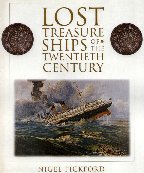 |
LOST TREASURE SHIPS OF THE TWENTIETH
CENTURY
Nigel Pickford Pavilion Books, London in 1999. Hard cover with dust jacket; 192 printed pages and extremely well illustrated with photographs and drawings. Dimensions: 28.5 cms tall by 24 cms wide. I think this is the follow up book by the author after his previous book “The Atlas of Shipwreck and Treasure”. This book is split into 20 chapters and each looks again at individual wrecks, some from the previous book and now at many new ones.: The Islander, The Admiral Nakhimov, The Republic, The Titanic, The Lusitania, The Hampshire, The Appam, The Laurentic, The Empress of Britain, The Edinburgh, The John Barry, The Awa Maru plus several other lesser know wrecks. The book finishes with a map of the “lost treasure ships”, a “gazetteer and cargo route listings” and finally a “glossary, bibliography and acknowledgements”. All wrecks are well researched with much archival material as well as information about the ships fate. [pt] [ps] |
|||
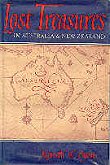 |
LOST TREASURES IN AUSTRALIA
AND NEW ZEALAND
Kenneth W. Byron. First published in 1964 by Ure Smith Pty Ltd, Sydney. Library of Congress # 648932. Hardcover, dustjacket, 232 pages, mono charts. Covers the vssels: Batavia, Gilt Dragon, Oceans Queen, Lancier, Zuytdorp, General Grant, Union, Katherine Shearer, Hope, Elingamite, Boyd, Waterwitch, Madagascar, Glenmark, Carlisl Castle, Niagara, and the Avoca. Also land based treasurs of Weiberg and Thunderbolt, and the Inverloch Treasur hoax - plus more. A very interesting book. [ps] |
|||
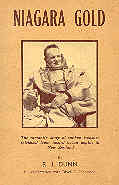 |
NIAGARA GOLD
The romantic story of sunken treasure retrieved from record ocean depths in New Zealnd. R.J.Dunn, in collaboration with Diver J.Johnstone. Published by A.H. & A.W.Reed, Wellington, NZ, 1942. Softcover, 51 pages, a few mono prints. The earliest publication on the raising of the gold from the Niagara off the north coast New Zealand in 1941. Several books have been subsequently published on the raising of gold bars from the wreck - see Gold From the Sea, above. A rare publication. [ps] |
|||
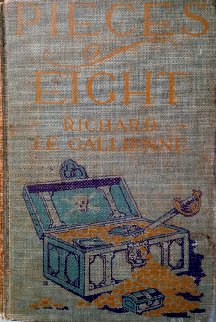 |
PIECES OF EIGHT
Being the Authentic Narrative of a Treasure Discovered in the Bahama Island, in the Year 1903 - Now First Given To the Public. |
|||
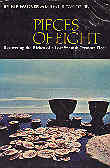 |
PIECES OF EIGHT.
Recovering the Riches of a Lost Sanish Fleet Kip Wagner, as told to L.B.Taylor. Appears t have been first published in 1966 by Real Eight Company, Inc. Also have indication of publication in 1966 by E. P. Dutton. British edition published by Longmans. Green & Co. Ltd, London, 1967. Hardcover, dustjacket, 222 pages, mono and colour plates throughout. Combines 20th century sleuthing methods with the romance and mystery of the past in this true story of a treasure hunt that has yielded millions. The author, a Florida construction man, picked up the first clues of the treasure fleet from Spain. Occasionally, blackend silver coins were discovered along a Florida beach. His imagination was fired and with the help of his friends he began a long research and search operation that is described in this engrossing book. Their work was arduous and at times dangerous. There were setbacks, grueling underwater ordeals but in time the rewards were sensational-thousands of silver pieces of eight and gold doubloons, silver bars and bullion, gold ingots, gold rings and pendants, priceless Chinese porcelain, a gold necklace and $3 million in treasure recovered by the hard working and persistent men. The story is told with humor, drama and the kind of factual detail any treasure hunter wants to know and that every armchair adventure will find fascinating. It has become one of the true classics of 'treasure literature'. [ps] |
|||
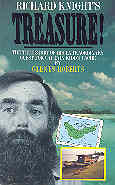 |
RICHARD KNIGHT'S TREASURE.
The True Story of His Extraordinary Quest for Captain Kidd's Cache. Glenys Roberts.Published 1986, Viking Penguin. Certainly not a classic, but worth mntioning, although not listed by David Crooks in 'Sunken Treasure Books'. "In November 1978 Richard Knight, an actor temporarily unemployed (thats like being nearly a virgin), in Los Angeles, stumbled across a clue to one of the greatest unsolved mysteries of the last three hundred years: the whereabouts of the hidden treasure hoard of the legendary seventeenth-century pirate Captain Kidd." I havn't read the book but I dont think he found it. Bit of a letdown I suppose. [ps] |
|||
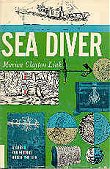 |
SEA DIVER - A Quest for History
Under the Sea.
Marion Clayton Link. First published March 1959; second printing June 1961, by Holt, Rinehart and Winston, New York. (Reprint indicates Holt, Rinehart and Winston of Canada, Limited). Hardcover, dust jacket, 334 pages, uncut leading edges, mono prints, maps. Author's husband Ed Link is well known as a pioneer in aviation, and the inventor of the Link trainer. This excellent book is a tale of their own search for sunken treasure in their 61ft converted shrimp trawler off the Florida keys and the Bahamas. [ps] |
|||
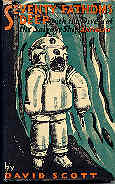 |
SEVENTY FATHOMS DEEP
with the divers of the Salvage Ship ARTIGLIO David Scott. Faber and Faber Limited, London. 1931. Second Impression 1932. Hardcover, dustjacket, 288 pages, index, mono plates, fold-out chart of coast of Brittany. A superb book, very well written, commencing with a brief history of major salvage operations, and then into more detail with the Italian salvage company 'Sorima' and their salvage vessel Artiglio, working on the wrecks of the Elizabethville and Egypt; includes the tragic explosion that killed several divers and most of the crew. A very important work in terms of early 20th century salvage (1930s). See also The Egypt's Gold, below. [ps] |
|||
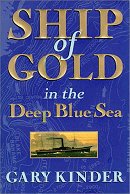 |
SHIP OF
GOLD IN THE DEEP BLUE SEA .
Gary Kinder. Little, Brown and Co, USA, 1998. ISBN 0 316 64714 4. (Hardcover). Hardcover, dustjacket, 507 pages, no prints. (Hardcover jacket, blue on far left ). Also: Atlantic Monthly Press, 1998. Hardcover, dustjacket, 507 pages. Also available in softcover, purple and gold cover below.
|
|||
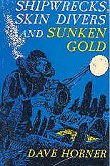 |
SHIPWRECKS, SKINDIVERS AND
SUNKEN GOLD
Dave Horner. Illustrations by Jack Woodson. Published 1965 by Dodd, Mead an Co, New York. Hardcover, dustjacket, 240 pags, mono photographs, line drawings. Divided into four parts: Pirates and Freebooters, Treasure Shipwrecks, Historical Shipwrecks, ... and More Shipwrecks. [ps] |
|||
| STALIN'S SILVER
John Beasant. Hardcover, 24 pages of photographs (most in color) and diagrams In August 1944, the German submarine U-859 sank the American merchant ship USS John Barry in the Arabian Sea off the eastern seaboard of Oman. The holds of the John Barry contained 3 million silver Saudi ryals, worth $80 million and over $300 million in silver bullion. The 7200-ton ship broke into two pieces and sank to a depth of 8,500 feet, more than one and a half miles. For 45 years, the great depth of the wreck ruled out any thoughts of salvage. However, in 1989, salvage rights were acquired by Sheikh Ahmed Farid al Aulaqi, who engaged the French International Maritime Institute and Jean Roux, leader of the team which recovered artifacts from the Titanic. The story of the USS John Barry is recreated with the help of living survivors, including one of the German U-boat officers, and the mystery of the intended destination of $300 million in silver is resolved. Stalin's Silver is as much a story of politics and intrigue between governments during WWII as it is the story of the salvage of the world's most valuable and mysterious sunken treasure. (eBay description). [ps] |
||||
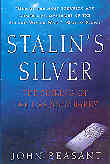 |
STALIN'S SILVER
The Sinking of the USS John Barry. John Beasant. Originally published by Bloomsbury Publishing, London, 1995. USA edition - St. Martin' Press, New York. 1999. Hardcover, dustjacket, 216 pages, mono prints, index. From the fly: August 28 1944 off the cost of Oman in the Arabian Sea, three torpedoes fired by German submriners aboard U-859 rain on Amercian merchant ship, the USS John Barry. She was carrying $80 million worth of silver riyals, and $300 million in silver bullion. She went down in 8500 feet. [ps] |
|||
| STALINS'S SILVER
Alaulagi A.F. Sheikh |
||||
| SUNKEN TREASURE: SIX WHO FOUND FORTUNES.
Robert F. Burgess Dodd Publishing, 1988. Hardcover; Hardcover; 333 pages. True life tale of six of the world's most famous and daring treasure hunters. |
||||
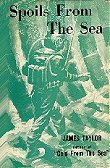 |
SPOILS FROM THE SEA
James Taylor. First published 1949, Australasian Publishing Co., Sydney. Hardcover, 240 pages, mono plates throughout. The book centres on the diving experiences of one of Australia's top standard dress divers, J.E. 'Johnno' Johnstone, who was the chief diver on the Niagara gold recovery in 1940 (see above). In this book, author Taylor covers salvage in Australian and Papua New Guinea waters, on such vessels as the Karitane, Casino, Wanaka, and the Niagara of course. [ps] |
|||
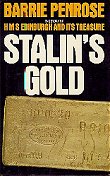 |
STALIN'S GOLD
The Story of HMS Edinburgh and Its Treasure. by Barrie Penrose. Published by Granada Publishing, UK, 1982. Hardcover, dust jacket, 224 pages, 16-page mono photograph feature. Although not a classic in the true sense, it is nevertheless a collectors item as the book was ordered to be withdrawn and pulped after litigation brough about, I believe, by Keith Jessop who was the leader and true finder of the Edinburugh. It is not know how many copies remained in circulation after the court order was issued. From the inside front fly: The inside story of how £40 million worth of gold ingots were recovered from the sunken wreck of the HMS Edinburgh is revealed-stage by stage-by the only journalist invited to observe the eight-week salvage operation throughout. It is a story of entrepreneurial enterprise, business acumen, space-age technology and international diplomacy, and it involved not least of all a team of divers working at unprecedented depths while an array of Russian and British trade, defence and security officials kept a wary eye on the accumulating gold-and one another. When, in 1942, the British cruiser Edinburgh was torpedoed by German warships in the Barents Sea, 170 miles north of Murmansk, it was carrying five tonnes of Russian gold as payment for Allied (principally American) war material. Precisely how the wreck-an official War Grave-came to be located, and how the most elaborate, expensive and politically delicate salvage operation ever mounted was initiated by a tiny Yorkshire consortium, is told here in compelling detail. The author has talked to many British and German wartime survivors, and pieced together the exciting naval background to the sinking of the ship as well as the whole story of Russia's wartime trade in precious metals. The result is a gripping saga of the most successful treasure hunt of all time.[ps] |
|||
| SUNKEN SHIPS OF TREASURE
John Christopher Fine. |
||||
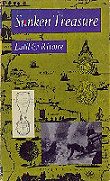 |
SUNKEN TREASURE
Pierre de Latil and Jean Rivoire.
|
|||
.jpg) |
SUNKEN TREASURE
Mark Williams. Cassell Ltd, London. 1980. Hardcover. From the fly: The first sale in England of sunken treasure retriev'ed from a British fighting ship lost in English waters realised more 20,000 GBP. Every item of coin, plate and jewellery had lain at the bottom of the sea for more than 2,50 years. This is the story of one Cornishman, Roland Morris, and his diving team who reeovered most of this treasure from the wreck ofHMS Association, the flagship of Sir Cloudesley Shovell, Rear~Admiral of Great Britain, Admiral of the Fleet and Commander-in-Chief of His Majesty's Mediterranean Fleet. Roland Morris became a professional diver at the age of nineteen, and was raised among people whose lives are ruled by the sea. He was obsessed witrh the dream of finding and raising the treasure of the Association. The trail was started by the discovery of a map (a detail of which illustrates this jacket) showing exactly where the ship had gone down, and ended in triumph many months later. This success was followed by the discovery of other wreck sites and more treasure, culminating in the location of the wreck of HMS Coossus and the retrieval of part of Sir William Hamilton's fabulous collectiou of Grecian art.Treasure from Spanish, Dutch and English ships, almost beyond counting, lost off the treacherous rocks of the Scillies, still lies waiting to be raised. This is the enthralling account of how some of it has been rccovered by modem equipment, by skill and, above all, courage. [gc] |
|||
 |
THE ATLAS OF SHIPWRECK AND TREASURE
Nigel Pickford Published by Dorling & Kindersley, London in 1994. Hard cover with dust jacket, 200 printed pages and extremely well illustrated with photographs and drawings. Dimensions: 31.5 cms tall by 26 cms wide. As seems to be the “norm” with all Dorling & Kindersley books, this book is so well illustrated as well as being a quality book. After the author’s introduction outlining his early influences, detective work and things like the sensitive subject of “grave or commercial target”, the book is split into two parts. Part 1 covers the wrecks while part 2 is a gazetteer of maps, shipwreck listings, bibliography and acknowledgements. Part one itself is split 14 parts progressing from early times (Bronze Age to Byzantium) moving through to finish in the second world war. In turn, each part is sub-subdivided into named wrecks from the time. Just to give an example, The Armada covers the Tobermory Galleon and the Girona while the second world war covers HMS Edinburgh, The City of Cairo, the I-53 and the John Barry. The section about Mail Ships and Liners covers the The Prins Fredrik, The Titanic, The Egypt and the Andrea Doria. Another interesting touch is a map showing the position of the wrecks mentioned at the front of each period along with other wrecks not reported in the book. What is very interesting is that each wreck has been well researched both the salvage and any history regarding the ship. [pt] |
|||
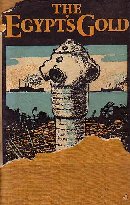 |
THE EGYPT'S GOLD
David Scott. Faber & Faber Limited, London. 1932. Second impression 1933. Hardcover, dustjacket, 310 pages, mono photographs, index. The incredible story of the raising of gold and silver bullion from the P. & O. liner Egypt, sunk in 400 ft in the Bay of Bisacay, thirty miles from land. It stands as one of the greatest achievements of all time with respect to salvage of modern treasure, in 1932. Note: This book was written after the author's Seventy Fathoms Deep, (see above) which told the incredible tale of the loss of the first salvage vessel on the Egypt, named the Artiglio. She was lost in a massive explosion on the very ship she was salvaging, and wa sucked down to the depths. A second Artiglio completed the salvage - but as the author states, was never called Artiglio II, for fear of bad luck. She was simply - Artiglio. 'The Egypt's Gold' completes the story. [ps-nodj] |
|||
 |
THE ELINGAMITE AND ITS TREASURE
Shipwreck off the New Zealand coast and the excitement of a modern search for gold. Wade Doak. Hodder & Stoughton. London and Auckland. 1969. From the fly: On a foggy November morning in 1902 the Elingamite, a passenger steamer on the run from Sydney to Auckland, was wrecked with a loss of forty-five lives on one of the lonely Three Kings Islands, north of New Zealand. The drama of the wreck, the tragedy and tension of death and rescue, the treasure that went down with the ship have kept the story fresh in the minds of many people in Australia and New Zealand. Hardcover, dustjacket. 192 pages, mono prints. |
|||
| THE FUNNEL OF GOLD.
The trials of the Spanish Treasure Fleets as they carried home the wealth of the New World in the face of Privateers, Pirates and Perils of the Sea. Mendel Peterson. [ps] |
||||
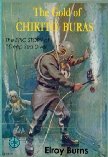 |
THE GOLD OF CHIKITO BURAS
The Epic Story of Deep Sea Diving. Elroy Burns. |
|||
| THE GOLDEN OYSTER
Donald Gordon. Hodder & Stoughton, 1st edition 1967. Hardback with dust jacket, 223 pages. From eBay: An adventure story of treasure hunting and deep sea diving, based on a true story. During WW2 a ship carrying the £6,000,000 'Rommel Treasure' of bullion, jewels and paper currency was sunk of the African coast. The author was involved in the real life search for this treasure and this story is based on his experiences. Not sure if this is a fictional ‘adventure story', or an actual essay on the Rommel Treasure. |
||||
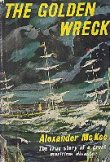 |
THE GOLDEN WRECK
Alexander McKee. First published in Great Britain in 1961; in the USA 1962; William Morrow & Co. Hardcover, justjacket, 224 pages, mono prints. This is an indepth tretise on the loss of the ship Royal Charter, near to her destination of Liverpool, from Australia with over three hundred thousand pounds worth of gold from the Australian fields. Her loss in 1859 is regarded as one of the most tragic in maritime history, with over 500 people lost within view of many witnesses on the shores of Anglesey, Wales. No women nor children survived. An excellent book and a valuable record . [ps] |
|||
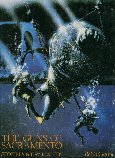 |
THE GUNS OF SACRAMENTO
Geoffrey and David Allen. Hardcover, 81 pages. First published by Robin Garton Ltd, London, 1978. ISBN 0 906030 06 4. From the blurb: The Portuguese galleon Sacramento was one of the great men 'owar of the seventeenth century. Built by Royal commission of teak, this thousand ton Leviathan mounted some sixty guns. But it was the massive bronz3e cannon in her hold, cast in Macao for the defence of Portugal, that made her maiden voyage in 1617 so vital. As with many of the great ships in history, her potential was never realised. Weighed down by her cargo, a freak storm drove heron to the rocks off Port Elizabeth, where she broke up. With her loss, Portuguese global strategy suffered an irrevocable reverse. David Allen traced and salvaged the Sacramento, bringing 40 bronze cannon ashore in spite of considerable interference. Research has brought to light the astonishing account of the surviving crew members who trekked 1,000 miles up the hostile African coast to safety. |
|||
| THE LOST TREASURE OF
THE CONCEPCION.
The Story of One of the World's Greatest Treasure Finds and Burt Webber - The Man Who Never Gave Up. John Grissim. |
||||
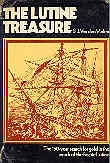 |
THE LUTINE TREASURE
The 150-year search for gold in the wreck of the frigate Lutine. S.J.Van der Molen. English translation by James Brockway. Copyright Nijgh & Van Ditmar, Rotterdam (no date, no doubt printed) English translated edition, first published 1970 by Adlard Coles Ltd, London. Hardcover, dustjacket, 268 pages, mono photographs. A lot of money has gone in to locating th Lutine's treasure in the North Sea, (northern English Channel), but to no avail. My good friend, the lat Kelly tarlton had a go at it, with not much luck. [ps] |
|||
| THE NANKING CARGO
Michael Hatcher with Antony Thorncroft and Max de Rham. Published by Hamish Hamilton, London. 1987. This lavishly illustrated book tells the story of the most exciting underwater adventure of the decade - the finding, raising and selling of the Nanking Cargo. In 1985 Mike Hatcher, ex-Barnado boy, ex-sheep farmer, located a Dutch East Indiaman, the Geldennalsen, which had been wrecked in 1752 in the South China seas. From the ocean bed, Hatcher and his partner, Max de Rham, salvaged its vast cargo of Chinese porcelain and gold. When this haul- known to the world as the Nanking Cargo - was sold at Christies in Amsterdam, it made over ten million pounds, and established Captain Hatcher as the. most controversial and wealthy treasure hunter of the day. Hatcher calls himself a marine archaeologist on a commercial basis; others have named him the new Jacques Cousteau. But he is very far from being a dry academic - more a modern buccaneer. Tough, uncompromising and ruthless, his home is his yacht, The Restless M, from which he and de Rham are hunting an even larger treasure somewhere off the coast of Singapore. Hatcher's many remarkable adventures have not only made him a millionaire. They have transformed the antique trade and set historians at each other's throats. And what has he found on his current expedition? Hardcover, dustjacket, 175 pages, mono and colour prints. [ps] |
||||
| THE PIRATE PRINCE
Discovering the priceless treasures of the sunken ship Whydah. Barry Clifford. |
||||
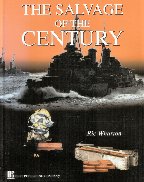 |
THE SALVAGE OF THE CENTURY
Ric Wharton Published by: Best Publishing Company in 2000. Illustrated hard laminated boards cover (no dust jacket); 198 printed pages. Dimensions: 26 cms tall by 21 cms wide. In 1981, the author led an expedition to salvage the Russian gold from HMS Edinburgh that was sunk in the second world war. Ric had previously formed the diving company called Wharton and Williams Ltd (otherwise known as 2W) and they salvaged gold to the value of £50,000,000 (GBP) from HMS Edinburgh which is at a massive depth of 256 metres in the Barents Sea – the deepest salvage at the time and that record possibly still stands. This book tells the story of the salvage, it is divided into 10 chapters and also 5 appendixes: 1 My First Salvage Operation. 2 Getting My Feet Wet. 3 Embarking on Our Own. 4 Arctic Convoys of World War 2. 5 The Search for the Edinburgh. 6 Striking Gold. 7 Our Ship Comes In. 8 Sailing in Other Waters. 9 The History of the Conception. 10 Returning to the Edinburgh. The five appendixes in the back of the book contains such things as scans of the insurance policies, documents for accounting of the gold and documents showing security procedures. The book is very well illustrated with many photographs of HMS Edinburgh before she sank as well as the many pictures taken at the time of the salvage. [pt] PS comment: For a most exciting read, get hold of a copy of Goldfinder by Keith Jessop (see listed above). Jessop did the hard yakka to research and find the ship. Wharton does not appear to give too much credit to Jessop; I wonder how much Jessop made out of the deal. I guess its not much consolation to know that his book is a better read than Whartons, as its the distribution of the gold that really counts. |
|||
 |
THE SILVER KINGDOM
Richard Garnett Rupert Hart-Davis. London.1957. Hardcover, dustjacket, 158 pages. 'An Adventure Diving For Sunken Works Of Art'. [May be fiction.] |
|||
| THE TOBERMORY TREASURE
The True Story of a Fabulous Armada Galleon. Alison McLeay. |
||||
. .
|
THE TREASURE DIVERS GUIDE
Including locations of sunken treasures, techniques of research, search and salvage, wreck identification and submarine archaeology. John Potter.
|
|||
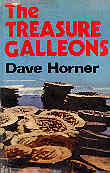
.. |
THE TREASURE GALLEONS.
Clues to Millions in Sunken Gold and Silver. Dave Horner.
|
|||
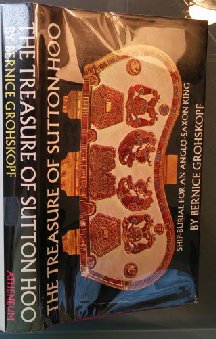 |
THE TREASURE OF SUTTON HOO. Ship-Burial
for an Anglo-Saxon King.
Bernice Grohskopf.. Atheneum, New York, 1970. Hardcover, in full purple cloth with bright gold stamped title on the spine. Dust Jacket. 8vo - over 7¾" - 9¾" tall; 169 pages, illustrated with photographs. "In the summer of 1939, the burial ship of a 7th century Anglo-Saxon king was unearthed near Sutton Hoo Estate, Suffolk, England..." Sutton Hoo, near Woodbridge, in the English county of Suffolk, is the site of two 6th- and early 7th-century cemeteries. One contained an undisturbed ship burial, including a wealth of Anglo-Saxon artefacts of outstanding art-historical and archaeological significance, now held in the British Museum in London. Sutton Hoo is of a primary importance to early medieval historians because it sheds light on a period of English history that is on the margin between myth, legend, and historical documentation. Use of the site culminated at a time when Rædwald, the ruler of the East Angles, held senior power among the English people and played a dynamic if ambiguous part in the establishment of Christian rulership in England; it is generally thought most likely that he is the person buried in the ship. The site has been vital in understanding the Anglo-Saxon Kingdom of East Anglia and the whole early Anglo-Saxon period. The ship-burial, probably dating from the early 7th century and excavated in 1939, is one of the most magnificent archaeological finds in England for its size and completeness, far-reaching connections, the quality and beauty of its contents, and the profound interest of the burial ritual itself. No diving in this but relevant for anyone interest in early treasuree history. |
|||
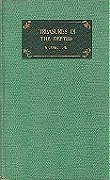 |
THE TREASURES IN THE DEPTHS
Robert Uhl. Copyright 1955 by Prentice-Hall, Inc, New York. Hardcover, no dust jacket, 217 pages, eight central mono plates. I have no idea what this is about but the endpaper map and photographs suggests salvage in the Caribbean using standard dress. |
|||
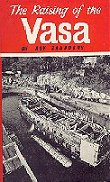 |
THE RAISING OF THE VASA
Roy Saunders. First published 1962 by Oldbourne Book Co. Ltd, London. Hardcover, dust jacket, 88 pages, mono plates throughout. I took aa great interest in the Vasa back in the mid seventies and corresponded with its finder, Anders Franzen in Stockholm. I have yet to see the ship, however. What a remarkable salvage, perhaps standing as still the greatest in the world, even considering the Mary Rose. It covers the history of its loss, the discovery, salvage and commencement of conservation. The content is of historical value even though much has been written about this ship. |
|||
| . | THE TREASURE DIVERS.
Kendall McDonald. Pelham Books, London no date (c. 1976). See author McDonald. |
|||
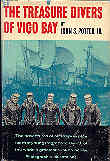 |
THE TREASURE DIVERS OF VIGO BAY
John S. Potter, Jr. Doubleday & Co, New York, 1958. Congress Catalog card Numbrer 58-13292 Hardcover, dust jacket, 480 pages, 32 mono plates centrally placed. The adventures of an irrepressible team of young frogmen in search of the world's greatest sunken riches. A Spanish fleet was defeated in Vigo Bay, Spain in 1702, sending many ships to the bottom with millions of dollars worth of gold. From the fly: " In a tremendous sea battle in 1702 a Spanish armada carrying millions of dollars worth of gold and silver was sent to the bottom of Vigo Bay, Spain. Two hundred and fifty years later - not averse to having a few million in doubloon s- John Potter decided to use the most modem means of treasure hunting to recover that sunken treasure which has attracted many expeditions in the past. He assembled a group of young skin divers of assorted nationalities, collected every scrap of information on the armada, studied the weather and sea conditions at the time of the battle, and the hunt was on! The ensuing adventures of these treasure divers were sometimes dangerous, sometimes hilarious, often frustrating, but al ways exciting. Here, in pictures and text, is a truly engrossing account of all that happened to the group. There is drama and beauty in the author's almost poetic descriptions of the underwater world; there is the gripping excitement of the treasure hunt itself; and there is the uproarious extracurricular life led by the young team when they went ashore. And, for the reader, there is the overwhelming sense of participating in a real adventure". [ps] |
|||
| . | THE WRECK HUNTERS.
Roger Jefferis and Kendall McDonald. See author webpage, McDonald. |
|||
. |
THE WRECK OF THE ALMIRANTA
Peter Earle. THE TREASURE OF THE CONCEPCION.
|
|||
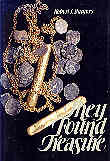 |
THEY FOUND TREASURE
Robert F. Burgess. Dodd, Mead and Co., New York. 1977. ISBN 0 396 07450 2. Hardcover, dustjacket, 245 pages, mono prints, index. From the fly: What is a professional treasure hunter really like? How does he get started? How and where does he find treasure? Here, in a series of personal interviews, some of the world's most successful treasure hunters reveal their secrets: how and why they began, the methods of research they use, their search and salvage techniques - the truths as well as the lies that make up the character of the treasure hunter. Among the men interviewed here are: Art McKee, the father of Florida trea- sure hunters, who found a galleon in his back yard off the Florida Keys. Kip Wagner, whose search for old coins with a surplus metal detector turned up the wreck of a 1715 Spanish treasure ship loaded with tons of silver. Mel Fisher, whose secret excavating device enabled him to discover a "carpet of gold coins" on the ocean bottom, including perfectly struck "Royals" valued at $17,000 each. Robert Stenuit, whose eight-year search in libraries and archives uncovered a maze of clues that led him directly to the treasure-laden wreck of the Girona. Tom Gurr, whose discovery of a 1733 Spanish shipwreck catapulted him to fame and fortune. Then came the strange ending to the good-luck story, with Gurr throwing his treasure back into the sea. . . or did he? The adventures of these and many others provide a surprisingly complete picture of modern treasure hunting. [ps] |
|||
 |
TREASURE
The Story of the Most Suceaaful and Most Tragic Treasur Hunt of Modern Times. Robert Daley. Random House, New York, 1977. Hardcover, dustjacket, 342 pages, mono prints. "I never dreamed it would be this hard to find".. Mel Fisher. The finding of the treasure on the Nuestra Senora de Atocha. My copy is signed "Find gold, Peter", by Mel Fisher, when I was part of a team that brought him to Melbourrne in the late seventies for an underwater congress. [ps] |
|||
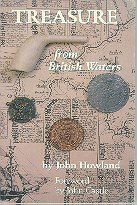 |
TREASURE FROM BRITISH
WATERS
John Howland Foreword by John Castle. Ram Publications, (USA?), 1991. Softcover, small size 11 x 17 cm, 159 pages, clour and nmono prints, This is basically a metal-detectors guidebook - there appears to be no diving included - and may have been published to encourage the activity of searching the coastline and beaches of England for metal items using a metal detector. [ps] |
|||
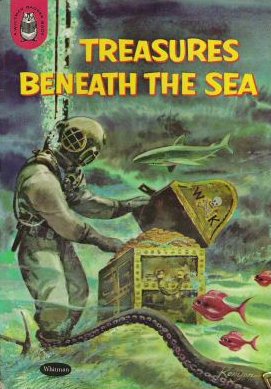 |
TREASURES BENEATH THE
SEA
No further details. |
|||
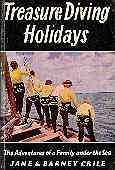
. |
TREASURE DIVING HOLIDAYS.
The Adventures of a Family Under the Sea. Jane and Barney Crile.
|
|||
| TREASURE - how and where to
find it.
Robert I. Nesmith and John S. Potter. Arco Publishing Company, Inc. New York. 1968. Hardcover, dustjacket, 152 pages, many mono photographs. Concerns land and sea treasure. Chapters include: Pirate Treasures, Coins and Bars; Beachcombing; Metal Detectors; Money Digging; Gold Panning; Underwater Placer Gold; The Treasure Recovery of the 1715 Plate Fleet; Cannons. Specific lLocalities covered are in the USA. A very interesting book with stories of treasures lost and found. See elsewhere in this category for other books written by the two authors. |
||||
 |
TREASURE IS NOT FOR THE FINDER.
Allan Robinson. Illustrations by Frank Pash. Self published 1980. ISBN 0 9594957 0 3. Hardcover, cloth boards, 140 pages, mono drawings. Welcome to what must be one of the worst, most pretentious books ever printed, an expression of the hatred of the author for authority and a means of removing, if at all that was possibble, the huge chip on his shoulder. It is terribly written, shockingly produced, and full of absolute self-serving rubbish. Robinson claimed to have found the Guilt Dragon. He didn't but that didn;t stop him from grabbing a cashe of coins for himself - and even counterfieting coins to sell. A self-accalimed historian, hi lubicrous theories of the discovery of Australia include the concept that Egyption rowed across the Indian Ocean and landed on the Monte Bello Islands and on th north-west of Autralia. How they managed to feed themselves on such a massive journey is conveniently ignored. When prosecuted by the Western Australian government for thieving coins, he went into hiding after stashing his loot. He did several stints in jail for violence including duffing up two policemen. He was not a man to meddle with. All this however is past tense. He died in jail sometime in the early eighties. Some people believe he was a pioneer in diving and badly done by. Some people are idiots. |
|||
| TREASURE HUNTER'S GUIDE
Robert L. Nesmith |
||||
 |
TREASURE HUNTING AROUND THE WORLD
Thomas Helm Copyright: 1951, Second printing 1960 Publisher: Dodd, Mead & Company Hardback, dust jacket 288 pages. "Thomas Helm combines an insatiable lust for adventure with the gifts of a born storyteller to convey the thrill of hunting for treasure around the world on land and beneath the sea. These unique personal sagas are told against the background of the tales of great treasures and their hunters, from Caribbean Buccaneers to twentieth century warriors, as close to home as New York's East River and as far afield as Philippine's Manila Bay. The irresistible drama of the treasure hunt is made more immediate for the reader by the author's notes on diving, gold-finding machines and the new kind of treasure - uranium - so that 'treasure hunting around the world' is a uniquely fascinating experience in an adventure which has intrigued mankind for centuries." |
|||
. |
TREASURE OF THE ATOCHA
A Four Hundred Million Dollar Archaeological Adventure.
|
|||
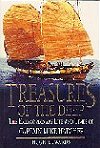 |
TREASURES
OF THE DEEP
The Extraordinary Life and Times of Captain Mike Hatcher. Hugh Edwards. Harper Collins, Australia, 2000. ISBN 0 7322 5885 5. The name Hatcher may not be so well remembered, but mention the Nanking Cargo to a diver and you will see an immediate interest. But the Nanking Cargo of exquisite porcelain is only one of Hatcher's incredible recoveries. This excellent book by Perth-based award-winning author Hugh Edwards tells of Hatcher' discoveries, his battles with governments and bureaucracies, and his life threatening experiences in Asian waters. "His story is one of guts and determination in the face of adversity, and of daring, skill and fantastic rewards". Softcover, 280 pages, colour plates. [ps] Out of print but available from Oceans Enterprises. |
|||
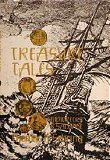 |
TREASURE TALES
No further details. |
|||
| TREASURE UNDER THE SEA. N.B.Stirling.
'A fascinating account of treasures lost and found, from Sir Francis Drake's abandonement of forty-five tons of silver and gold to thew jettisonong of millions of dollars during World War 2.' Published by Doubleday & Co, Garden City, New York, 1957. Indicates also copyright Fawcett Publications, Inc. 1956. Hardcover, dustjacket, 353 pages, no photographs. Five sections: Treasure on a Grand Scale; Drake's Forty Five Tons of Silver; The Treasure of the Puritan Pirates; Gold Four hundred feet Down; Operation Sunken Peso; The Miser Sea - The Grovenor, the Duke's Galleon. [ps] "Here are sparkling accounts of history's most famous sea treasures, which were either lost by accident or dumped on purpose: Pizzaro's doubloons, Sir Francis Drake's more than forty tons of silver, the Philippine Govermnent's gold in Manila Bay, and others... armchair and practiced treasure hunters will find hard-fact information in this book." |
||||
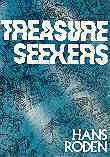 |
TREASURE SEEKERS
A Chronicle of Fortunes Lost and Hidden and the Efforts made to Salvage Them. Hans Roden. Translated by Frances Hogarth-Gaute. First published under the title 'Schatzsucher', copyright 1963 by Koehlers Verlagsgesllshaft, Jugenheim/Bergstresse. English translated edition, published 1966by George G. Harrap & Co., London. Hardcover, dustjacket, 208 pages, mono maps, no phoptographs. In twenty chapters covers a number of 'lost treasures' including that of Captain Kidd, the Vigo galeons, the Lutine, the Egypt, Romel's treasures. [ps] For Italian edition link here. |
|||
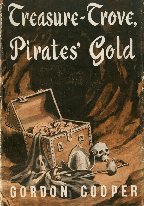 |
TREASURE-TROVE, PIRATE'S
GOLD
Gordon Cooper. First published in 1951 by Wilfred Funk, Inc. New York. Hardcover, probably with a dust jacket, 186 pages, mono prints. This is not all maritime related. In fact, an excellent chapter exists on the 'Hidden Hoardes of the Incas and Aztcs'. Covers also Europe's buried treasure, and Africa's 'mysterious cachs'. The final chaptr is 'Where the Lost Ship's Lie'. The famed (Australian) Lasser's lost gold field is indicated on the map but I couldn't find reference in the text on a casual glance. |
|||
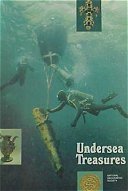 |
UNDERSEA TREASURES.
National Geographic Society. Published 1974. Hardcover, dustjacket. Chapter contents include: Wrecks and Riches: The Lure Below; Pioneers in the Search for Gold; Treasure Hunting: The Amateurs; Treasure Hunting: The Professionals; Archeology in the Old World Waters; Diving for New World Wrecks; Nature's jewels Beneath the Sea; Future Challenges, Lost Fortunes. [ps] |
|||
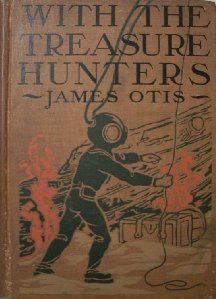 |
WITH THE TREASURE HUNTERS
A Story of the Florida Cays. James Otis. J.B.Lippincott Company, Philadelphia and London. 1903. Hardcover, apparently no dust jacket (pictorial front cover); 340 pages, five illustrations. Measures about 6 by 8 inches. Could be fiction. |

